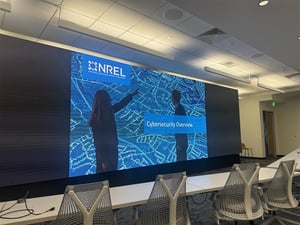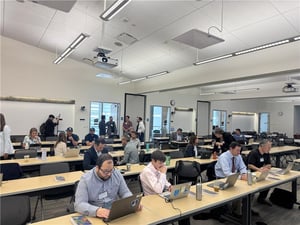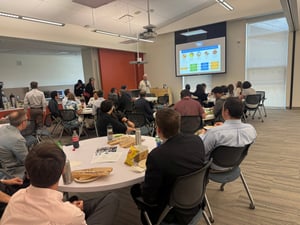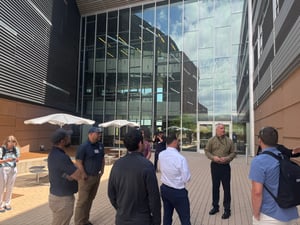ACT National Renewable Energy Laboratory (NREL) Workshop
May 22, 2025 | Golden, CO
On May 22, 2025 we we hosted a group of approximately 35 ACT and AAAE members for a site visit and tour at the National Renewable Energy Laboratory’s (NREL) South Table Mountain Campus in Golden, CO.
As multiple forms of Advanced Air Mobility (AAM) continue to expand, airports need to start thinking now about future electric needs, a handful of speakers from the National Renewable Energy Laboratory (NREL) and NASA said during the event. AAM expands beyond what one typically thinks of when they hear the term, said NASA Advanced Concepts Group Lead Nick Borer. It includes urban air mobility, such as electric vertical take-off and landing (eVTOL) aircraft, where the vision is to take people across town; small unmanned aerial systems, such as drones, used for local deliveries; and regional air mobility (RAM), or aircraft that will be starting and ending at any size airport. RAM are traditional take-off and landing aircraft that could exist today, but are often to expensive a concept except in niche markets, Borer said, noting that electricity savings can help bring down the cost.
There is an opportunity, Borer said, to meet the needs of AAM users at airports while also providing energy to the local community. Most airports are public use, on municipally owned land, that is flat, providing an opportunity for them to be part of a “community energy solution,” he added, creating Airports as Energy Nodes (AENodes). AENodes are being studied under NASA’s Aeronautics Research Mission Directorate in collaboration with NREL. Airports can be enabled, he added, to accommodate advanced air transportation while also becoming a “desirable component of the community energy solution.”
To explore AENodes, NREL and NASA are working with Tweed/New Haven Airport (HVN) in Connecticut and Winchester Regional (OKV) in Virginia, along with local utility companies at both airports, to model current and future energy scenarios. Through the studies at HVN and OKV, NASA and NREL are working to generate data, reports and designs of future airport energy architectures for at least one airport suitable to achieve buy-in from key stakeholders — namely FAA, the local utility and the community —for full-scale development and demonstration as an AENode.
Attendees also had the unique opportunity to tour NREL’s Energy Systems Integration Facility (ESIF). The ESIF is focused on energy systems research, development and demonstration. It is where new technologies are evaluated using state-of-the-art equipment and resources and employs nearly 250 personnel. During the tours, which were broken into small groups, attendees, representing a mix of airports and consultants from across the country, were able to see how NREL is testing a variety of energy components by looking into multiple laboratories.
Among the stops was a visit to NREL’s supercomputer, known as Kestrel, which provides 10.4 gigaflops per watt and began operation in April 2024. In a visualization lab, attendees saw in both 2D and 3D the power needs in detail of the San Francisco Bay area, including San Franciso International. The guide, an ESIF manager, noted how with this tool, airports can study their power needs in a real time simulation and then see what additional needs they might have, such as due to airplane chargers, micro chargers, etc.
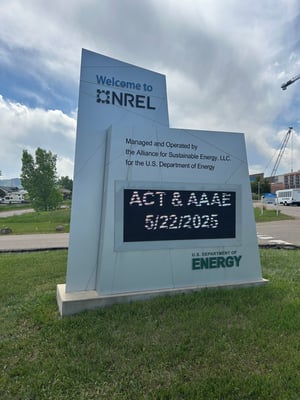
-1.jpg?width=300&name=NREL%20Photo%20(2)-1.jpg)
